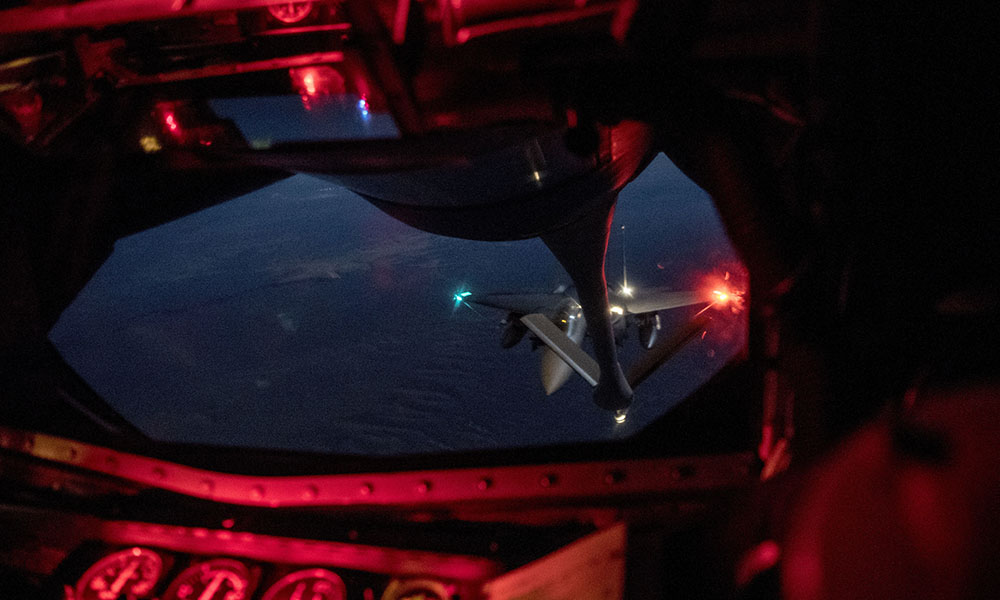Commercial Partners Critical to DOD Success

By Terri Moon Cronk
Originally published October 10, 2019 on www.defense.gov
Commercial partners are critically essential to the Defense Department’s success, the Commander of US Transportation Command said.
“I remind everybody that the only reason that we exist is to project and sustain the joint force,” Army Gen. Stephen R. Lyons said at the NDTA-USTRANSCOM Fall Meeting in St. Louis.
“Our great Airmen, Soldiers, Sailors, Marines and Coast Guardsmen are out there every day [with] our commercial partners that are agile and adaptive to be able to respond to dynamic force employment [and that is] really held in amazement by everybody, but particularly by our adversaries,” he said.
But what adversaries admire most, the TRANSCOM Commander said, is the ability to conduct global command and control on a global scale.
“This incredible network of allies and partners we have across the globe, and the ability we have to project power to move at the time and place of our choosing … never changes,” even as environments become more complex, Lyons said.
The ability to launch bombers from the continental United States and strike targets in North Africa and return to the United States without ever landing in sovereign territory for refueling is an incredible capability, the General said, but it requires global integration and synchronization of resources that are positioned across three different continents.
This joint deployment enterprise framework is a global posture—a network enabled not only by military capability, but also by commercial networks, the TRANSCOM Commander noted. “The incredible relationships with our like-minded partners and allies across the world allows us to expand this logistics network to a global scale,” he said.
Mobility platforms complement that framework, Lyons said.
Our adversaries know that we can come if we have the will,” Lyons said, noting that few people are aware of such elements as dynamic force employment and the US ability to move every single day.
Few realize how much is going on inside the mobility enterprise, he said, such as how many brigades or batteries are moving, or how many fighter squadrons are conducting operations while moving across the ocean.
“And it’s equally challenging for our adversaries to decipher what’s going on inside this mobility enterprise and our ability to hide a needle in a needle stack when we need to,” he added.

Longshoremen load military vehicles and equipment containers belonging to U.S. Army Alaska during a joint readiness exercise at the Port of Anchorage in Alaska, Aug. 22, 2019. Airmen and soldiers from Joint Base. Photo by Alejandro Pena for the US Air Force/Released.
DOD’s commercial industry partners are a key part of these capabilities, which serve as a strategic deterrent and clearly demonstrate the US ability to respond if it needs to the TRANSCOM Commander said.
Meanwhile, DOD pays particularly close attention to the cyber world, based on the vulnerability of potential consequence, Lyons said.
“There are no silver bullets. We continue to work through cyber hygiene, cyber defense, realigning architectures, moving to the cloud—many initiatives—to buy down cyber risk for the joint fundamental enterprise and USTRANSCOM,” he said.
Other areas of interest Lyons emphasized included sealift recapitalization, improving household goods shipments for service members, aerial refueling and digital modernization.
Additionally, he said, China’s intent to disrupt 75 years of international norms, its efforts to shape predatory behavior—especially economically through state-owned enterprise and others—and its worldwide investments are creating a serious level of competition.
“This is about setting the conditions so that the United States, its allies and partners, who are democratically minded, remain in a position of advantage and can prevent great-power conflict,” Lyons said to contractors in the audience on their role in meeting that challenge.
Adversaries, he told them, clearly “see you as a pathway to be able to deny or degrade our ability to project power.”
Feature Image Credit: An F-16E Strike Eagle closes in on a KC-135 Stratotanker for aerial refueling during Exercise Mobility Guardian above central Washington, Sept. 11, 2019. Mobility Guardian provides airmen with the training to deliver a more rapid global response. Photo by Air Force Senior Airman Charles Fultz/Released.
